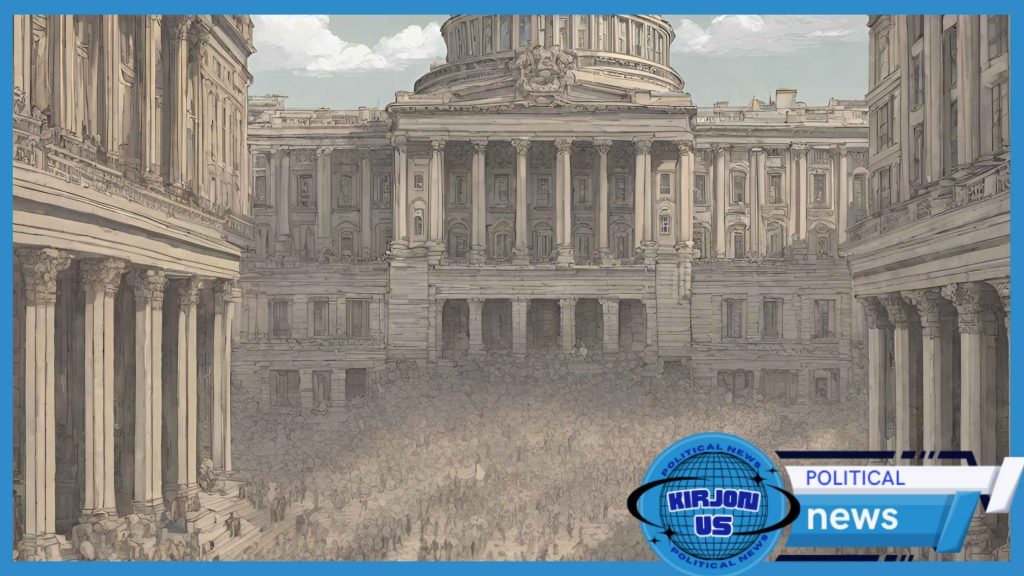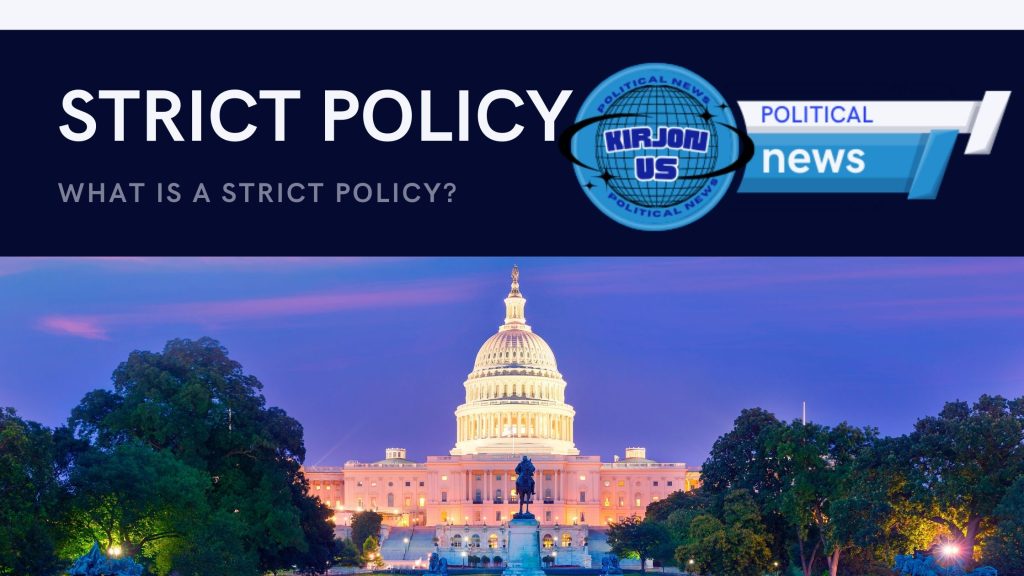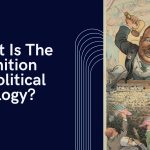In the fabric of societal structure, strict policies stand as the threads that weave order and discipline into the tapestry of various environments, from workplaces to educational institutions and beyond. These policies serve as guiding principles, delineating the boundaries within which individuals and organizations operate. A strict policy, by definition, is a set of rules or guidelines characterized by their unwavering adherence to predefined standards or protocols.
Whether it’s maintaining decorum in a classroom, ensuring workplace safety, or upholding legal regulations, the implementation of strict policies plays a pivotal role in governing behavior and fostering compliance. This article delves into the essence of strict policies, exploring their significance, types, benefits, challenges, and effective implementation strategies. By understanding the nuances of strict policies, we can appreciate their role in shaping environments conducive to growth, productivity, and harmony.
Types of Strict Policies

Workplace Policies
In the realm of workplaces, strict policies encompass a diverse array of regulations aimed at fostering professionalism, safety, and productivity. These policies govern various aspects of employee conduct, ranging from attendance and punctuality to dress code and ethical standards. Workplace policies also address issues such as harassment prevention, data security, and intellectual property rights, ensuring a conducive and harmonious work environment.
Educational Institution Policies
Educational institutions are bastions of learning and development, where strict policies play a crucial role in shaping the behavior and academic integrity of students. These policies cover a broad spectrum of areas, including academic conduct, attendance requirements, disciplinary procedures, and student code of conduct. By delineating expectations and consequences, educational institution policies uphold the values of integrity, respect, and responsibility, contributing to the cultivation of a conducive learning environment.
Government Policies
At the societal level, government policies serve as the framework for governance, encompassing laws, regulations, and directives that govern various aspects of public life. These policies span a wide range of domains, including taxation, environmental protection, public safety, healthcare, and social welfare. Government policies are characterized by their enforceability and authority, ensuring compliance and accountability among individuals, businesses, and institutions.
Online Platform Policies
In the digital landscape, online platforms implement strict policies to regulate user behavior, content moderation, and community standards. These policies govern user-generated content, online interactions, and privacy protection, aiming to maintain a safe and inclusive online environment. Online platform policies often address issues such as hate speech, cyberbullying, misinformation, and intellectual property rights, reflecting the platform’s values and commitments to user safety and engagement.
By delineating these distinct types of strict policies, we gain insight into the multifaceted nature of policy enforcement across various domains, each serving a unique purpose in shaping behavior, ensuring compliance, and fostering accountability.
Benefits of Implementing Strict Policies

Strict policies, when effectively implemented, offer a multitude of benefits that contribute to the orderly functioning and success of organizations, institutions, and societies at large. Below are some of the key advantages associated with the implementation of strict policies:
Maintaining Order and Discipline
Strict policies provide clear guidelines and boundaries, establishing expectations for behavior and conduct within a given environment. By delineating acceptable standards and consequences for non-compliance, these policies help maintain order and discipline, preventing chaos and fostering a sense of structure and stability.
Ensuring Compliance with Rules and Regulations
In contexts where legal or regulatory frameworks exist, strict policies serve as mechanisms for ensuring compliance with established laws, regulations, and standards. By mandating adherence to prescribed protocols and procedures, these policies help mitigate risks, prevent legal liabilities, and uphold organizational integrity.
Enhancing Safety and Security
In environments where safety and security are paramount, such as workplaces, educational institutions, and public spaces, strict policies play a crucial role in safeguarding individuals and assets. By implementing safety protocols, emergency procedures, and security measures, these policies reduce the likelihood of accidents, incidents, and breaches, promoting a safer and more secure environment for all stakeholders.
Fostering Accountability and Responsibility
Strict policies promote a culture of accountability and responsibility by holding individuals accountable for their actions and decisions. By establishing clear expectations and consequences, these policies encourage individuals to take ownership of their behavior, choices, and outcomes, fostering a sense of responsibility and accountability among stakeholders.
Enhancing Efficiency and Productivity
By streamlining processes, standardizing procedures, and minimizing deviations, strict policies contribute to increased efficiency and productivity within organizations and institutions. By reducing ambiguity and ambiguity, these policies enable smoother operations, faster decision-making, and optimal resource allocation, ultimately enhancing overall performance and productivity.
Promoting Fairness and Equity
Effective implementation of strict policies ensures fairness and equity in the treatment of individuals, regardless of their status, background, or affiliations. By applying consistent standards and procedures, these policies prevent favoritism, discrimination, and bias, fostering a culture of fairness, equity, and inclusivity within the organization or community.
In conclusion, the benefits of implementing strict policies are manifold, ranging from maintaining order and discipline to enhancing safety, promoting accountability, and fostering productivity. By adhering to clear guidelines and standards, organizations, institutions, and societies can create environments that are conducive to growth, success, and well-being. However, it is essential to strike a balance between enforcing strict policies and allowing for flexibility and adaptability to address individual needs and circumstances effectively. Ultimately, the effective implementation of strict policies requires a nuanced approach that considers the unique context and objectives of each organization or community.
Benefits of Implementing Strict Policies

Strict policies, when effectively implemented, offer a multitude of benefits that contribute to the orderly functioning and success of organizations, institutions, and societies at large. Below are some of the key advantages associated with the implementation of strict policies:
Maintaining Order and Discipline
Strict policies provide clear guidelines and boundaries, establishing expectations for behavior and conduct within a given environment. By delineating acceptable standards and consequences for non-compliance, these policies help maintain order and discipline, preventing chaos and fostering a sense of structure and stability.
Ensuring Compliance with Rules and Regulations
In contexts where legal or regulatory frameworks exist, strict policies serve as mechanisms for ensuring compliance with established laws, regulations, and standards. By mandating adherence to prescribed protocols and procedures, these policies help mitigate risks, prevent legal liabilities, and uphold organizational integrity.
Enhancing Safety and Security
In environments where safety and security are paramount, such as workplaces, educational institutions, and public spaces, strict policies play a crucial role in safeguarding individuals and assets. By implementing safety protocols, emergency procedures, and security measures, these policies reduce the likelihood of accidents, incidents, and breaches, promoting a safer and more secure environment for all stakeholders.
Fostering Accountability and Responsibility
Strict policies promote a culture of accountability and responsibility by holding individuals accountable for their actions and decisions. By establishing clear expectations and consequences, these policies encourage individuals to take ownership of their behavior, choices, and outcomes, fostering a sense of responsibility and accountability among stakeholders.
Enhancing Efficiency and Productivity
By streamlining processes, standardizing procedures, and minimizing deviations, strict policies contribute to increased efficiency and productivity within organizations and institutions. By reducing ambiguity and ambiguity, these policies enable smoother operations, faster decision-making, and optimal resource allocation, ultimately enhancing overall performance and productivity.
Promoting Fairness and Equity
Effective implementation of strict policies ensures fairness and equity in the treatment of individuals, regardless of their status, background, or affiliations. By applying consistent standards and procedures, these policies prevent favoritism, discrimination, and bias, fostering a culture of fairness, equity, and inclusivity within the organization or community.
In conclusion, the benefits of implementing strict policies are manifold, ranging from maintaining order and discipline to enhancing safety, promoting accountability, and fostering productivity. By adhering to clear guidelines and standards, organizations, institutions, and societies can create environments that are conducive to growth, success, and well-being. However, it is essential to strike a balance between enforcing strict policies and allowing for flexibility and adaptability to address individual needs and circumstances effectively. Ultimately, the effective implementation of strict policies requires a nuanced approach that considers the unique context and objectives of each organization or community.
Challenges Associated with Strict Policies

While strict policies offer numerous benefits, their implementation can also present various challenges that organizations, institutions, and policymakers must navigate. Understanding these challenges is essential for devising strategies to mitigate potential drawbacks. Below are some of the key challenges associated with strict policies:
Resistance from Stakeholders
One of the primary challenges of implementing strict policies is resistance from stakeholders, including employees, students, or members of the community. Resistance may stem from a variety of reasons, including perceived infringement on personal freedoms, disagreement with the policy rationale, or concerns about the policy’s impact on individual autonomy. Addressing resistance requires effective communication, stakeholder engagement, and transparency regarding the rationale and objectives behind the policy.
Difficulty in Enforcement
Enforcing strict policies can be challenging, particularly in environments where monitoring compliance is complex or resources for enforcement are limited. Without effective enforcement mechanisms, policies may lack credibility and fail to achieve their intended objectives. Overcoming enforcement challenges often requires investment in training, technology, and personnel to ensure consistent implementation and adherence to policies.
Potential for Negative Impact on Morale and Creativity
Excessive rigidity in policy enforcement can stifle creativity, innovation, and morale among stakeholders. Strict policies that leave little room for flexibility or autonomy may lead to disengagement, resentment, and reduced motivation among individuals affected by the policies. Balancing the need for compliance with fostering a supportive and empowering environment is crucial for mitigating the negative impact of strict policies on morale and creativity.
Unintended Consequences
Strict policies may inadvertently result in unintended consequences that undermine their effectiveness or create new challenges. For example, zero-tolerance policies in schools may disproportionately affect marginalized students or contribute to the school-to-prison pipeline. Anticipating and addressing potential unintended consequences requires careful consideration of the policy’s broader implications and proactive measures to mitigate risks.
Navigating these challenges requires a nuanced approach that balances the need for order and compliance with the recognition of individual rights, autonomy, and well-being. By addressing resistance, enhancing enforcement mechanisms, fostering a supportive organizational culture, and mitigating unintended consequences, organizations and policymakers can maximize the benefits of strict policies while minimizing their potential drawbacks.
Examples of Strict Policies
Strict policies manifest in various forms across different contexts, each tailored to address specific concerns and objectives. Below are some illustrative examples of strict policies implemented in different domains:
Zero-Tolerance Policies in Schools
Zero-tolerance policies in schools aim to address issues such as violence, drug possession, bullying, and disruptive behavior by mandating automatic and severe disciplinary actions for violations. These policies often result in suspension, expulsion, or legal consequences for students found in breach of the established rules. While intended to maintain safety and order, zero-tolerance policies have faced criticism for their disproportionate impact on marginalized students and their role in perpetuating the school-to-prison pipeline.
Workplace Dress Code Policies
Workplace dress code policies prescribe specific guidelines regarding attire, grooming standards, and personal appearance expected from employees within the workplace. These policies vary widely across industries and organizations, ranging from formal business attire requirements in corporate settings to more relaxed dress codes in creative or casual workplaces. While dress code policies serve to maintain professionalism and uphold organizational image, they can also be sources of contention and perceived as restrictive by employees.
Government Regulations on Environmental Protection
Government regulations on environmental protection impose strict guidelines and standards on industries, businesses, and individuals to mitigate environmental degradation, pollution, and resource depletion. These regulations encompass a range of measures, including emission limits, waste management requirements, land use restrictions, and conservation efforts. Compliance with environmental regulations is enforced through monitoring, inspections, and penalties for non-compliance, aiming to safeguard natural resources and public health.
Social Media Platforms’ Community Guidelines
Social media platforms establish community guidelines to govern user behavior, content moderation, and community standards within their online ecosystems. These guidelines outline acceptable and prohibited actions, such as hate speech, harassment, nudity, violence, and misinformation. Social media companies employ automated tools, content moderators, and user reporting mechanisms to enforce these policies and maintain a safe and inclusive online environment for users.
By examining these examples, we gain insight into the diverse applications and implications of strict policies across different domains. While strict policies play a crucial role in shaping behavior and maintaining order, their implementation requires careful consideration of potential impacts and the need for fairness, equity, and flexibility.
Factors to Consider When Implementing Strict Policies
Implementing strict policies requires careful consideration of various factors to ensure effectiveness, fairness, and alignment with organizational objectives. Below are key factors that organizations and policymakers should consider when implementing strict policies:
Clear Communication
Effective communication is essential for ensuring that stakeholders understand the rationale, objectives, and expectations associated with strict policies. Clear and transparent communication helps mitigate misunderstandings, address concerns, and garner support for policy implementation. Organizations should provide comprehensive information about the reasons behind the policy, its implications, and avenues for seeking clarification or feedback.
Flexibility and Adaptability
While strict policies provide clear guidelines and standards, they should also allow for flexibility and adaptability to accommodate diverse circumstances and individual needs. Flexibility in policy implementation enables organizations to respond to evolving challenges, changing environments, and unique situations without compromising on overarching objectives. Incorporating mechanisms for exceptions, appeals, or revisions can enhance the policy’s effectiveness and acceptance among stakeholders.
Fairness and Equity
Strict policies should be applied consistently and fairly to all individuals, irrespective of their status, background, or affiliations. Ensuring fairness and equity in policy implementation requires transparent decision-making processes, unbiased enforcement, and mechanisms for addressing grievances or disputes. Organizations should strive to uphold principles of fairness, justice, and equality to build trust and credibility in their policies.
Regular Review and Updates
Policies should be periodically reviewed and updated to reflect changes in external conditions, organizational priorities, or stakeholder feedback. Regular evaluation of policy effectiveness allows organizations to identify areas for improvement, address emerging challenges, and ensure continued relevance and alignment with organizational goals. Soliciting feedback from stakeholders and conducting thorough assessments can inform evidence-based decision-making and policy refinement.
By considering these factors during the implementation of strict policies, organizations can enhance their efficacy, legitimacy, and acceptance among stakeholders. Striking a balance between clarity and flexibility, fairness and equity, and regular review and updates is essential for fostering a culture of compliance, accountability, and continuous improvement within the organization or community.
Case Studies
Examining real-world examples provides valuable insights into the effectiveness, challenges, and implications of implementing strict policies. Below are two case studies illustrating contrasting experiences with strict policies:
Successful Implementation of Strict Policies: Company X’s Safety Protocol
Company X, a manufacturing firm, implemented a stringent safety protocol aimed at reducing workplace accidents and promoting employee well-being. The policy included mandatory safety training, use of personal protective equipment (PPE), regular equipment maintenance, and strict adherence to safety procedures.
Following the implementation of the safety protocol, Company X experienced a significant decrease in workplace accidents and injuries. Employees reported feeling safer and more confident in their work environment, leading to improved morale and productivity. By prioritizing employee safety and enforcing strict adherence to safety guidelines, Company X demonstrated its commitment to fostering a culture of safety and accountability.
Challenges with Strict Policies: School Y’s Zero-Tolerance Policy
School Y, a public high school, implemented a zero-tolerance policy for student misconduct, including possession of drugs, weapons, and engaging in violent behavior. The policy mandated immediate suspension or expulsion for any violations, regardless of the circumstances or mitigating factors.
While the intention behind the zero-tolerance policy was to maintain a safe learning environment, it faced criticism for its inflexibility and disproportionate impact on students from marginalized backgrounds. Many students found themselves unfairly penalized for minor infractions or caught in the crossfire of disciplinary actions. As a result, the policy contributed to increased dropout rates, alienation of students, and strained relationships between the school administration and the community.
These case studies highlight the importance of considering contextual factors, stakeholder perspectives, and unintended consequences when implementing strict policies. While successful implementation can lead to positive outcomes, rigid enforcement without flexibility or consideration of individual circumstances may result in unintended negative consequences. Striking a balance between maintaining order and fostering fairness is essential for maximizing the effectiveness and acceptance of strict policies.
Conclusion
In today’s complex and dynamic environments, the implementation of strict policies serves as a cornerstone for maintaining order, promoting compliance, and fostering accountability. From workplaces to educational institutions and beyond, strict policies play a vital role in shaping behavior, mitigating risks, and upholding standards of excellence.
Throughout this article, we’ve explored the significance, types, benefits, challenges, and strategies for implementing strict policies. We’ve seen how clear communication, flexibility, fairness, and stakeholder engagement are essential elements in the development and implementation of effective policies.
While strict policies offer numerous benefits, they also pose challenges, such as resistance, enforcement difficulties, and unintended consequences. Navigating these challenges requires a balanced approach that prioritizes clarity, fairness, and adaptability.
In essence, strict policies are tools for creating environments that are conducive to growth, safety, and success. By striking a balance between enforcing rules and fostering flexibility, organizations and policymakers can maximize the benefits of strict policies while mitigating potential drawbacks. Ultimately, the goal is to create policies that promote compliance, accountability, and well-being for all stakeholders involved.
As we move forward, it is imperative to continue refining and adapting strict policies to meet evolving needs and challenges. By continuously evaluating, updating, and improving policies, we can ensure their effectiveness and relevance in a rapidly changing world. Together, we can build environments that are characterized by order, fairness, and excellence, guided by the principles of effective policy implementation.
FAQs
- What are some common examples of strict policies in the workplace?
- Common examples of strict policies in the workplace include dress code policies, attendance and punctuality requirements, anti-harassment policies, and data security protocols. These policies aim to maintain professionalism, ensure safety, and uphold organizational values.
- How can organizations overcome resistance to strict policies?
- Organizations can overcome resistance to strict policies by fostering open communication, involving stakeholders in the decision-making process, providing rationale for the policies, and addressing concerns through education and training. Building trust and transparency can also help garner support for policy implementation.
- Are there any legal implications of implementing strict policies?
- Yes, there are legal implications associated with implementing strict policies, particularly concerning discrimination, privacy rights, and compliance with labor laws. Organizations must ensure that their policies are in accordance with relevant legal regulations and seek legal counsel if necessary to mitigate potential legal risks.
- What role does technology play in enforcing strict policies?
- Technology plays a significant role in enforcing strict policies through the use of monitoring tools, data analytics, and digital platforms. Organizations utilize technology to track compliance, detect violations, and enforce consequences. However, it’s essential to balance technological enforcement with privacy considerations and ethical standards.
- How can strict policies contribute to organizational growth and development?
- Strict policies contribute to organizational growth and development by promoting a culture of accountability, consistency, and compliance. By establishing clear guidelines and standards, organizations can minimize risks, enhance efficiency, and foster a positive work environment conducive to innovation and productivity.







